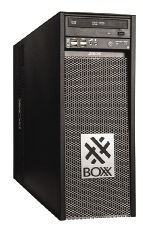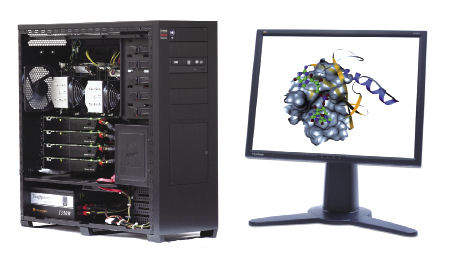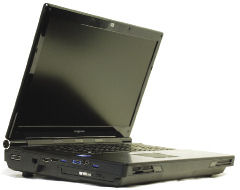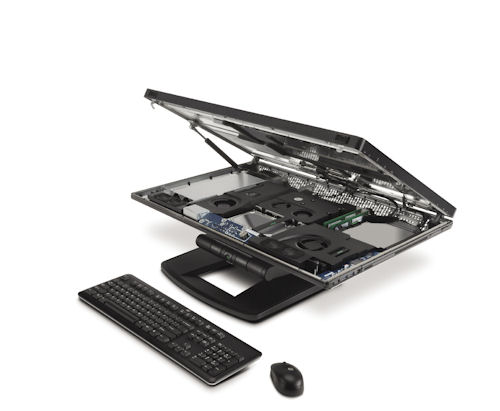The Evolution of Workstations
Vendors fine tune workstations for engineering applications and performance.
Latest News
April 1, 2013
Luckily, workstations continuously evolve, getting faster better and cheaper than previous generations. Workstation vendors have not blinded themselves to the fact that today’s products may not fare well against the innovations of tomorrow and are seeking ways to future proof workstation technology with innovative designs, expansion options, and ease of service.
A quick look at the current crop of workstations reveals the evolutionary process at work. First let’s take a look at the custom players on the market, who have to balance price against features to find an edge to compete against the major players:
 |
BOXX Technologies: BOXX is a manufacturer of high performance mobile and desktop workstations that are geared toward offering the highest performance possible for visual effects (VFX) design professionals and visualization applications. As of late, the company has been promoting its multi GPU design as the wave of the future—with some systems featuring as many as four GPUs. The company also leverages liquid cooling and over clocking. Products are protected by a three year warranty, which should assuage any worries about overclocking. The company offers all-in-one workstations via their mobile workstation product line, which are powered by Intel Core series processors and feature full HD 17.1-in. displays. As far as the future is concerned, BOXX leverages the latest in CPUs, GPUs, memory and other hardware, and engineers as much performance as possible out of those components.
Xi Computer: Xi Computer has been in the workstation business for more than 25 years and offers a variety of workstations based upon both AMD and Intel Technologies. The company’s most recent innovations include notebook-based workstations powered by Intel Core i7 processors as well as multi Xeon processor-based workstations. Xi Computer also offers a high level of customization for its customers using a build-to-order methodology, at a low price point.
 |
Microway Computer: Microway is a U.S. General Services Administration (GSA) Schedule approved vendor that manufactures a variety of PCs and workstations. Microway has been building high performance systems since 1982. When it comes to modern workstations, Microway (like many other vendors) leverages the Intel Xeon platform, as well as AMD Opteron processors. NVIDIA GPUs play a major role in the graphics subsystem, as well as part of the computational capabilities of the workstations. Microway offers the WhisperStation series of workstations and, as the name implies, low noise is a primary focus. What’s more, the workstations are designed to be easily linked together to build multi-node clusters. The company prides itself in its advanced research.
Rave Computer: As one of the smallest players in the workstation market, Rave Computer focuses on building highly customized engineering workstations that stress reliability and maximum performance for the CAD/CAM/CAE markets. The Rave Ignition series of Workstations can be fully customized, allowing an almost unlimited selection of chassis type, processors, GPUs and so on. The company also offers solutions built on the Intel Xeon Phi platform that brings high-performance parallel processing to the forefront of workstation design.
 |
Eurocom: As far as workstations are concerned, Eurocom focuses on the mobility segment, where its desktop replacement systems have been engineered to offer workstation-level performance with 3D capabilities. The company refers to their products as “3D supercomputing laptops” and “ultimate mobile workstations,” which feature large screens (17.3-in.), high-performance processors (Core i7 or Xeon) and 3D graphics processors.
Seneca: Seneca is primarily a systems builder that works with OEMs and ISVs to create a multitude of computing offerings. However, the company’s claim to fame in the workstation space comes from its Nexlink product line of workstations. Nexlink workstations are designed as lower cost alternatives to ultra-high performance engineering workstations, and are aimed at a more general design market. The Nexlink product line’s sweet spot is for those on tight budgets who are looking for workstation-level performance that is upgradable and well supported.
Big vs. Small
The smaller workstation vendors outlined above have turned to specialized markets and niches to fill their order sheets, hoping to plug the gaps left by the major manufacturers. However, innovation is far from dead at the industry giants, who have development budgets that overshadow the total sales of some of the smaller vendors on the market.
 |
HP: Hewlett Packard focuses a significant amount of effort on innovation, which has resulted in distinct workstation solutions that incorporate all-in-one designs, small form factors (SFF), or tool-less service. Take for example the HP Z1 series, which features an all-in-one design, incorporating the processing power into the same housing as the display. The Z1 Offers a 27-in. display with Xeon power and a tool-less chassis. The company offers models that can incorporate different processors, GPUs, storage capacities and so on. HP also offers SFF-based workstations in its Z220 series, which crams high performance processing power into a diminutive case.
Dell: PC giant Dell offers a wide array of PCs, workstations, notebooks and many other hardware products. The company offers traditional workstations in tower, desktop and desktop replacement form factors. The company’s entry-level T1650 workstation features third-generation Intel core processors, while the company’s top of the line T5600 series feature Intel Xeon family processors. A variety of graphics options are available, as well as a multitude of storage options. The company’s most innovative workstation products come in the form of its mobile workstations, which feature ISV certification, displays as large as 17.3 in. and quad core processors.
Lenovo: PC builder Lenovo offers the Thinkstation family of PCs to those seeking high performance workstations. The product line is available under four different series, including a small form factor under the E series and ultrahigh performance units under the S series. With four product lines and multiple sub models, there is a Lenovo workstation designed for most any occasion. The products feature the gambit of Intel processors, multiple graphics options, tool-less serviceability, and a great deal of customization. Lenovo stresses reliability and ergonomics as its primary selling points, with a dash of affordability thrown in.
Frank Ohlhorst is chief analyst and freelance writer at Ohlhorst.net. Send e-mail about this article to [email protected].
More Info






